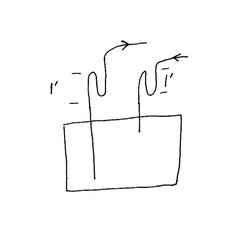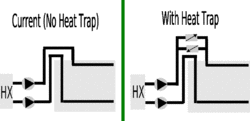Here is a link to pictures: http://woodnotoil.googlepages.com/constructionlog (scroll down to the bottom two pictures) This shows the piping by the pumps below tank level and where the pipes come out of the lid.
There is definite movement in the pipes when the ball valve is not closed because the are hot to the touch all the time when open and cold to the touch when hot. However, I will concede this is likely not the only thing going on. I am still not sure how well the probe well is indicating the tank temp and what is occuring in terms of mixing. These are not easy things to diagnose.
When I was first floating the idea of "dip tubus" with a flat plate someone in this forum warned me how easily these lines would start siphoning.
pybyr - Basically the siphoning in this case is caused by the hot water wanting to rise to the highest point which is in the pipes exiting the lid. That push starts a flow that keeps cycling.
There is definite movement in the pipes when the ball valve is not closed because the are hot to the touch all the time when open and cold to the touch when hot. However, I will concede this is likely not the only thing going on. I am still not sure how well the probe well is indicating the tank temp and what is occuring in terms of mixing. These are not easy things to diagnose.
When I was first floating the idea of "dip tubus" with a flat plate someone in this forum warned me how easily these lines would start siphoning.
pybyr - Basically the siphoning in this case is caused by the hot water wanting to rise to the highest point which is in the pipes exiting the lid. That push starts a flow that keeps cycling.



